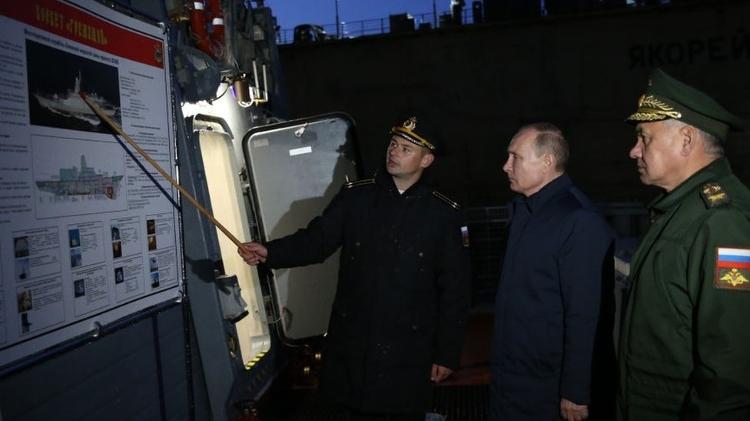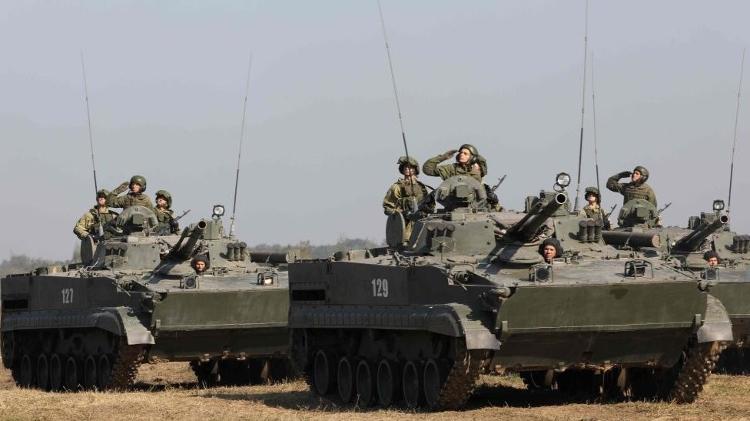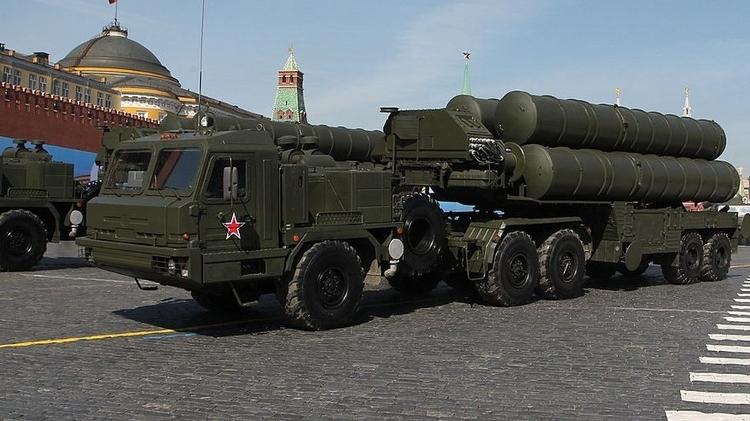“The Baltic Sea will de facto become a NATO lake,” said Andrey Kortunov, recently head of Russia’s Council on International Relations, a Moscow-based think tank.
After Russia’s military invasion of Ukraine, the two traditionally neutral Scandinavian countries reversed their policies and requested to join the Western military alliance Finland and Sweden.
Some analysts believe the decision is a “catastrophic” for Moscow, which has always viewed alliance expansion as a threat to its own security.
But Russian President Vladimir Putin surprised many by claiming in May 2022 that “it’s okay” as long as new NATO members don’t house military infrastructure, especially nuclear weapons, on their soil.
What has become clear is that the strategic map of the region will be completely different when Finland and Sweden join NATO.
“The Baltic Sea will be transformed into a de facto NATO lake,” said Andrey Kortunov, head of the Russian International Relations Council, a Moscow-based think tank affiliated with the Russian Foreign Ministry.
In fact, with Sweden and Finland joining NATO, Russia will remain about 200 km along the Baltic Sea coast. Allied countries will occupy 90% of the other 8,000 km of coastline: Estonia, Latvia, Lithuania, Poland, Germany, Denmark and the new members, Sweden and Finland.
But wedged between Poland and Lithuania, the Kaliningrad region is a residential or administrative region of Russia that has no land borders with the country’s territory. With a population of just under one million, Kaliningrad has become a strategic point in the deepening divisions between the West and Russia.
There are analysts who assure that this small area is necessary both for Moscow’s offensive against Ukraine and to ensure its defense against possible hostilities from NATO countries. There are even reports of Russia planting nuclear weapons there.
From Königsberg to Kaliningrad
Kaliningrad is currently one of Russia’s 46 regions, but the only one that does not share a land border with the country. Besides its strategic and military importance, Kaliningrad has a great historical significance for both Europe and Russia.
The historical origins of the region go back to ancient times and are closely related to the fate of East Prussia and its capital, Königsberg. The ancient city was founded in 1255 by the Teutonic Knights, a German-born Catholic crusader who ruled Prussia.
When East Prussia seceded from Germany after World War I, the area remained part of Germany until early 1945. II. At the end of World War II, it was conquered by the Red Army of the Soviet Union.
The Yalta Conference defined the division of land between Poland and the USSR, which was formalized in Potsdam in 1945. The Russian name derives from Mikhail Kalinin, a prominent member of the Bolshevik communist movement and head of state of the Union. Union between 1922 and 1946.
Between Russia and the West
Kaliningrad is home to the only year-round ice-free port on the Baltic Sea. Therefore, the port city is crucial for both Russia and the Baltic States to guarantee transportation and commerce throughout the region, where temperatures often stay below freezing for much of the winter.
But besides transportation and trade, Kaliningrad is a strategically vital region for Russia due to its geographical location on the Baltic Sea and its proximity to NATO. It is home to Russia’s Baltic Fleet, and Moscow’s westernmost district is close to the heart of Europe.
In May 2022, the Baltic Fleet announced that it would launch a series of simulated missile strikes from the nuclear-capable Iskander system. The Iskander missile system was first introduced to the region in 2016 and was upgraded in 2018 as part of Russia’s strategy to offset NATO’s ballistic missile defense shield development in Europe.
Since the occupation of Ukraine, regular military exercises have been held in Kaliningrad with the participation of the Baltic Fleet.
“Kaliningrad has been at the center of Russia’s security concerns since the first wave of NATO enlargement was announced in the 1990s,” said Ruth Deyermond, professor of post-Soviet security in King’s College London’s Department of War Studies.
“Inevitably, as tensions escalate between Russia and NATO, so do concerns about Kaliningrad,” Anna told the BBC’s Spanish-language service BBC News Mundo.
Kaliningrad has been heavily militarized for years, but after Russia’s annexation of Crimea in 2014, Russia’s military presence in the region was consolidated.
“It’s not surprising that this region, which is probably the region with the highest concentration of Russian and NATO forces in Europe, is now the focus of heightened security concerns on both sides,” says Deyermond.
risks
Russia does not deny or admit that it has planted nuclear weapons in Kaliningrad and often uses vague language about these accusations.
“The deployment of this or that weapon, the deployment of military units, etc., on the territory of Russia, are exclusively matters of the sovereignty of the Russian Federation,” Kremlin spokesman Dmitry Peskov said in 2018. Said.
But some officials, such as Lithuanian President Gitanas Nausèda, say Moscow has placed nuclear weapons in this strategic Baltic region.
Military analysts believe that if NATO intervenes in the ongoing conflict in Ukraine or Moscow points its guns at other former Soviet republics such as Lithuania, Kaliningrad could become a launching pad for a Russian attack on these countries.
But Stefan Wolff, professor of international security at the University of Birmingham in England, doesn’t believe this is an unlikely scenario at this time.
“I have no impression that Russia is seriously considering escalation or has the resources to do so at the moment,” he told BBC News Mundo. “But it’s a long-term possibility. So it will be important to strengthen NATO’s defense capabilities now to deter any future Russian action.”
Experts agree that if Sweden and Finland join the alliance, Russia will strengthen its military position in Kaliningrad. However, according to Ruth Deyermond, this should “probably be understood as something more defensive. Russia will not attack Poland or the Baltic states, but will protect its territory against NATO.”
It is unknown how long the ratification process will take for Sweden and Finland to join NATO. Normally such a process would take less than a year, but in this case, it has already been said that some members of the alliance, such as the United States, may pressurize it to speed up the process.
Meanwhile, experts believe that the heavily militarized Kaliningrad region could be a crucial point for Russia’s offensive against Ukraine.
“It’s not fundamental yet, but its importance may increase if there is tension between Russia and NATO or if Russia begins destabilization operations in the Baltic States or Poland,” says Stefan Wolff.
The most serious risk for Ruth Deyermond is neither a deliberate invasion nor the deliberate use of nuclear weapons. “The most serious risk in the Baltic is a miscalculation or misunderstanding that leads to an escalation that no one wants.”
“The area is small, the terrain does not present significant natural barriers, and there are many military personnel very close together. This provides favorable conditions for an accident to spiral out of control,” he explains.
“But as long as all parties are aware of the possibility, as I think it is, the risk can be managed,” says the expert from King’s College.
Did you know that the BBC is also on Telegram? subscribe to the channel.
Have you watched our new videos on YouTube?? Subscribe to our channel!
source: Noticias
[author_name]


